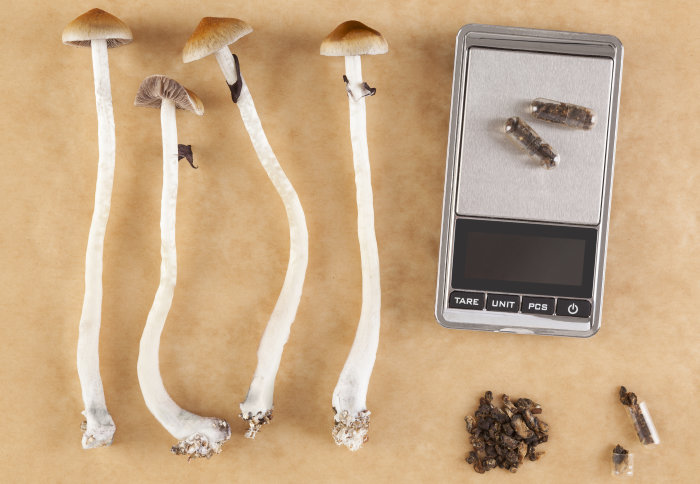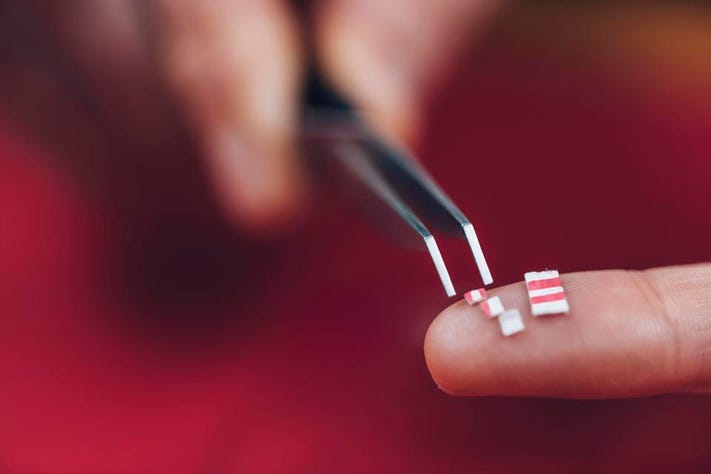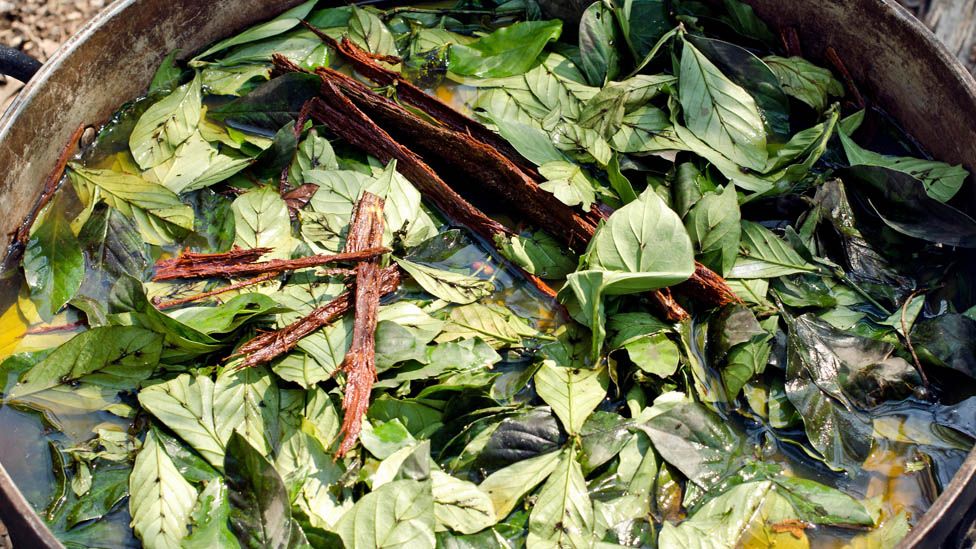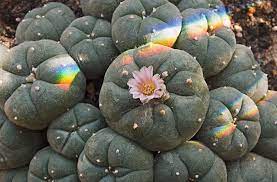Microdosing

Magic Mushroom
Psilocybin, Psilocybe
Magic mushrooms are the most common substance people use today as a microdose. They’re easy to take and there’s a lot of research on the specific benefits and safety of using this substance.
What’s a Typical Microdose For Magic Mushrooms
The usual microdose of magic mushrooms is between 0.2 and 0.5 grams (200 to 500 milligrams).
Begin by weighing out the desired dose in raw, dried mushrooms, or take the dose as a capsule. All you need to be able to microdose shrooms is a small scale.
How it Feels
- Improved focus & concentration
- Increased creativity
- Greater sense of empathy
- Improved mood

Microdosing LSD
Lysergic Acid Diethylamide
LSD (lysergic acid diethylamide) is, by far, one of the most popular psychedelics in the world. It was made famous in the 1960s by public figures like Timothy Leary, Ram Dass, and brothers Dennis and Terrence McKenna.
This psychedelic comes in the form of small squares of blotter paper coated in the liquid LSD. The tabs are placed under the tongue and absorbed through the mucus membranes and microcapillaries in the mouth.
This is the second most popular substance for microdosing. It’s readily available, has a high level of safety, and there’s plenty of research to back up its suggested benefits.
How it Feels
- Boost in energy and focus
- Increased clarity of thought
- Lower appetite
- Frequent flow-states

Microdosing MDMA
3,4-Methylenedioxymethamphetamine, commonly known as ecstasy, E, molly, or sassafras.
MDMA (Methylenedioxymethamphetamine) is an amphetamine-based drug. It’s a stimulant that works primarily through the serotonin receptors in the brain.
MDMA is technically classified as a psychedelic, but it’s effects are unique from any of the other psychedelics on this list. It activates the same serotonin receptors as magic mushrooms and LSD, but with a different focus.
Only high doses of MDMA (not recommended) produce psychedelic effects, but the hallucinations it produces are still much milder than any of the other classical psychedelics.
Some people report microdoses of MDMA help them feel more connected with the people around them, elevates their mood, and helps alleviate symptoms of post-traumatic stress disorder, anxiety, and depression. However, more research is needed to understand whether MDMA is safe long-term.
How it Feels
- Higher mental and physical energy
- Better focus and concentration
- Elevated mood
- Improved sense of empathy

Microdosing Ayahuasca
DMT, chachruna, caapi, yajé, yagé, la purga, daime
Ayahuasca is a combination of two Amazonian plants — the ayahuasca vine (Banisteriopsis caapi), and a source of DMT (usually Psychotria viridis or Mimosa pudica). When mixed together, the combination produces a powerful psychedelic experience.
Ayahuasca isn’t a common substance to microdose, but it offers all the same benefits as the other classical psychedelics — with a few extras.
How it Feels
- Improved sense of connectedness
- A greater level of empathy towards others
- More creativity & vision
- Colors may appear more vibrant
- More frequent flow-states

Microdosing Mescaline
Peyote, San Pedro Cactus, Huachuma
Mescaline is the active ingredient in psychoactive species of cacti — including peyote, San Pedro, and Peruvian torch cactus.
This psychedelic isn’t as popular as it used to be — but not because it’s not as useful as the more common psychedelics. The reason most people don’t take mescaline is because its raw forms (the psychoactive cacti) require a high dose in order to reach psychoactive thresholds. You need to consume several grams of the raw cactus at a time to achieve psychoactive doses. This much cactus can often upset the stomach and has a very disagreeable taste and texture.
None of this is an issue when it comes to microdosing. It’s relatively easy to take low-dose mescaline in the form of raw psychoactive cacti.
This substance is great for inducing creative flow states, supporting deep meditation, and focusing on being more aware and present in your daily life.
Mescaline is especially grounding and has a strong tendency for making people feel more present an “in the moment” than most of the other psychedelics.
How it Feels
- Reduced stress & anxiety (some report higher anxiety also)
- A greater sense of empathy and connectedness
- More energy & mental endurance
- Better focus & concentration
- A greater sense of wellbeing & happiness

Microdosing Iboga
Ibogaine, Tabernanthe iboga, Voacanga africana
Ibogaine is a psychoactive indole alkaloid produced in a variety of African plant species — most notably Tabernanthe iboga.
This plant medicine has been used in traditional medicine for thousands of years and has become popular in the 21st century for treating addiction and depression in a similar manner as ayahuasca.
It’s not as easy to microdose ibogaine as it is with most of the other psychedelics. The potency of ibogaine can vary significantly depending on which plant was used, and how the extract was made.
Additionally, everybody responds differently to ibogaine, so it’s hard to determine the best dose before trying it yourself.
How it Feels
- Increased clarity of thought
- A greater sense of introspection (sometimes too much)
- Sense of empathy & connectedness

Microdosing Cannabis
Marijuana, weed, herb, pot, grass, bud, ganja, Mary Jane
Cannabis isn’t psychedelic, but it does have psychoactive effects due to an active ingredient called THC (tetrahydrocannabinol). THC works through a series of specialized receptors in the brain called endocannabinoid receptors. These receptors regulate a wide range of neurological functions ranging from appetite, pain transmission, mood, and more.
Cannabis has a lot of health benefits. It’s used to alleviate pain, support anxiety, improve sleep, and stimulate the appetite.
But many people don’t want the high that comes along with a standard psychoactive dose of cannabis products.
Taking low-doses of cannabis has been shown to offer many of the same benefits as regular doses, without the high. Additionally, low-dose THC has actually been shown to offer a greater level of benefit towards managing symptoms such as anxiety, sleep, and low-grade pain.
Some people choose to use a different isomer of THC that naturally has a lower tendency towards anzious side-effects instead called delta 8 THC.
Animal studies have even shown that long-term, low-dose THC offers a protective action on the brains of mice. It’s thought that repeated microdoses of THC can help ameliorate the progression of neurodegenerative disorders like Parkinson’s disease, Alzheimer’s disease, or multiple sclerosis.
How it Feels
- Reduces the sensation of pain
- Less feelings of nausea
- A feeling of being relaxed & care-free
- Improved focus & creativity
Are Microdosing Mushrooms Replacing Alcohol as a Social Drug?
Rather than entering an alternative world for hours and hours, microdosers say they’re tweaking the world they already live in to make it brighter, softer, and funnier. The practice dovetails with the sober-curious trend, where many young people are limiting alcohol but still want to be able to have a good time with their friends. Although studies show women in general seem to be drinking more, Gen Z is drinking less. Shrooms appear to fit into the lives of those who want to cut back on the booze, but still socialize and let loose. “A microdose is a nice balance where you’re still getting a buzz,” Helena*, 31, who works in media in Los Angeles, says. “But when it’s over, you don’t have a hangover or feel groggy.